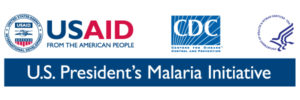Methods
Four indicators were calculated for each dataset:
- Individual access to ITN within the household
- Individual use of ITN the previous night
- Household ownership of at least one ITN
- Ratio of population ITN use to population ITN access within the household, referred to as the use:access ratio.
Calculating Indicators
ITN use was calculated in the household member file, as was access to an ITN. This appropriately weights the access ratio for each household according to the number of members in each household. (Running the access calculation and calculating the mean within the household file does not take into account the number of people in each household, making that result an unweighted mean.) However, ITN ownership is calculated within the household file.
Data management and analysis was done using Stata 14 (Stata Corporation, College Station, Texas, USA). All analyses accounted for survey design including sampling weights where applicable using the survey command family in Stata.
Access
The survey indicator of access to ITN within the household was calculated from the datasets of individual household members as recommended by MERG [1]. First, an intermediate variable of “potential ITN users” was created by multiplying the number of ITN in each household by a factor of 2.0. In order to adjust for households with more than one net for every two people, the potential ITN users were set equal to the de-facto population in that household if the potential users exceeded the number of people in the household. Second, the population access indicator was calculated by dividing the potential ITN users by the number of de-facto members for each household and determining the overall sample mean of that fraction.
Use
Use of an ITN the previous night was calculated for each de facto member of the household (i.e., those present in the house the previous night), as recommended by MERG using the listings of net users from the net roster [1].
Household Ownership
Household ownership of at least one ITN was also calculated for each dataset based on the number of ITN observed in the household and defining an ITN as a factory-treated net that does not require any further treatment.
Stratifications
Access, use, and ownership were stratified by region, by rural/urban status (residence), wealth quintile, and where available, whether the household had received IRS in the last 12 months for each country. Cluster weighted univariate regressions were conducted to assess whether significant differences existed between strata.
Download the Stata do-File [DOCX]


